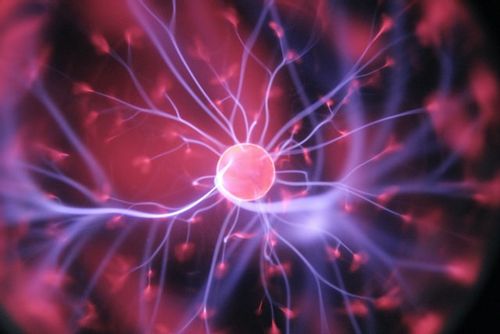FOR AGES 7 YEARS TO 11 YEARS
Image © freepik, under a Creative Commons license.
We eat food every day without a second thought, but the whole process is really quite amazing when you think about it.
The human digestive system is part of the National Curriculum for primary school children in Year 3, Year 4 and Year 5. They are bound to come home with lots of questions about the process and, thanks to our handy guide, now you can have all the answers!
There is so much more to learn about the human body. Once your kids have perfected their knowledge of the digestive system, they can take a look at these brilliant respiratory system facts, or see how many of these science trivia questions they can answer - good luck!
When we eat food, the body needs to break it down so that our bodies can use substances from it. This process is called digestion. The digestive system is the name for the series of organs that work together to help break down food the food that we eat so that we can absorb it into the bloodstream.

Image © nastyaofly, under a Creative Commons license.
Eating food is second nature to most of us - especially little children with hungry tummies! We don't tend to think much about how we digest food, so prepare to amaze your child by talking through the five stages of digestion with them.
1) At the beginning of the process, food enters your digestive system via the mouth. But did you know that our digestive system gets to work even before the food reaches our mouth? That’s right, it is actually the sight, smell or thought of tasty foods that sets the processes in motion! When we smell, see, or even think about a yummy bite to eat, our mouth starts producing saliva (also known as spit). The saliva’s job is to mix with the food, making it easier to chew once it is in your mouth. Therefore, when you take a bite of food, not only do your teeth crush and chew the food, but the saliva also helps to break down the chemicals in the food, making it easier to swallow. Your tongue also plays a part, moving the food around your mouth so that the whole mouthful gets chewed by your teeth! Once your food is ready to be swallowed, the tongue plays a crucial role: it pushes a small amount of the chewed and mushy food (called a bolus) towards the back of your throat, where it reaches the opening of the oesophagus, and the next stage of the digestive system can begin!
2) Next, the food is pushed down a long tube called the oesophagus to eventually get to the stomach. The opening of the oesophagus is right next to the opening of your windpipe at the back of your throat, so, before any food reaches the oesophagus, the human body has a clever way of ensuring it reaches the correct tube. A special flap called the epiglottis is responsible for covering the opening of your windpipe every time you swallow to ensure that the food all goes in the right direction. If the epiglottis fails to flop down over the windpipe opening in time food and drink might enter this tube instead, this will make you feel very uncomfortable and you might complain that your mouthful has “gone down the wrong way”. It happens to us all and is nothing to worry about, it usually just makes you cough a lot to clear the windpipe, but it is cool to know the science behind why this happens, right? Once your food is safely in your oesophagus, the muscles in the walls of the oesophagus work together to gently move the food down the spongy tube (a distance of almost 25 centimetres) to reach your stomach.
3) Here's where it gets interesting. The stomach is a stretchy J shaped sack at the end of the oesophagus, which acts as a mixture for the food you have swallowed. In order to break down the food into a liquid-like substance your stomach produces a strong acid called hydrochloric acid - this kills microorganisms, which may have been swallowed with the food and can be harmful if they are not killed at this point. Enzymes are also produced in the stomach, these do the crucial job of breaking down food so it can be absorbed into the body. These important substances for breaking down your food are called gastric juices! The stomach also has strong muscles in its walls, these are important as they churn the food, making sure that it is all mixed together and broken down as much as possible. The stomach’s last job is to slowly empty the mixture that it has partially digested into the intestines.
4) The intestines are split into two parts: the small intestine and the large intestine. Digested food is absorbed into the small intestine first. The small intestine isn’t really that small at all: if you unravelled and stretched it out, it would reach a length of around six metres (that’s the same as the average height of a giraffe!). The small intestine works alongside three other organs: the liver, pancreas and gallbladder, to further breakdown your food and absorb nutrients (such as proteins, carbohydrates, fats, vitamins and minerals) from it into your bloodstream. The organs’ job is to send special juices to the small intestine, with each organ responsible for sending different justice to help absorb different nutrients. The pancreas helps us to absorb fats and proteins, the liver enables us to absorb fats and the gallbladder is important for storing the bile produced by the liver which allows this to happen. Absorbing all of these nutrients is really important as it allows your body to make use of the benefits that they offer, for example calcium strengthens your bones and protein strengthens your muscles. These useful nutrients travel to the liver, and are absorbed into the bloodstream so that the blood can carry the useful substances from the food around the body. The leftover waste, on the other hand, goes straight to the large intestine.
The large intestine gets its name because it is fatter than the small intestine (the small intestine is up to five centimetres wide, whereas the large intestine can be up to 10 centimetres). The large intestine is responsible for getting the waste material left over from the digestion process to where it needs to be in order to be removed from your body. Before it goes, the waste material passes through the colon, this is a part of the large intestine where any remaining water and minerals from the waste material can be absorbed into the blood. This removal of water hardens the waste product, leaving you with a solid waste material to dispose of, known as stool or faeces.
5) This faeces is pushed out of the large intestine and is stored in the rectum until you are ready to go to the toilet. When you do go, this waste is pushed through the anus and removed from your body.

Image © nensuria, under a Creative Commons license.
Want to geek out with your child with even more facts on the digestive system? Here's our top 10:
1) Saliva is used at the start of the digestive process. We make one to three pints of this a day!
2) An adult's stomach can handle 1.5 litres of material.
3) Food stays in our stomachs for three to four hours.
4) The hydrochloric acid produced by the stomach to kill off harmful bacteria is also found in cleaning supplies including toilet bowl cleaners - it's strong stuff!
5) The stomach has a thick coating of mucus to protect itself from this corrosive acid. The stomach has to produce a new coat of mucus every two weeks.
6) When your tummy rumbles, it's the sound of normal movements in your stomach and intestines as food, gas and fluid pass through the gastrointestinal tract. However, when the tract is empty, there's nothing there to muffle the sound so it makes a loud noise.
7) The small intestine is about six metres long and between 3.5 and five centimetres in diameter. The surface area is a huge 250 square metres - about the size of a tennis court!
8) There are more than 400 species of bacteria in the colon.
9) Enzymes, which are found in the human digestive system, are also present in washing detergents to get dirt out of clothes.
10) There are three types of enzymes used in the digestive system. Proteases help to break down meat, amylases help to break down carbohydrates and lipases help to break down fats. Your saliva contains amylases and lipases while proteases are used in the stomach and intestines.
The information above should cover the digestive system for kids, but for inquisitive minds (both adults' and children's) here's a more comprehensive list of human digestive system terms and organs:
Absorb: To take in nutrients or chemicals.
Bacteria: A single-celled microorganism. Some species are responsible for illness.
Colon: This is another word for the large intestine.
Corrosive: The ability to destroy something with a chemical action.
Digestive tract or gastrointestinal tract: These are the parts of the body that break down food - the mouth, oesophagus, stomach, pancreas, liver, gallbladder, small intestine and large intestine.
Enzyme: A complicated chemical produced by living cells.
Excrete: To get rid of the waste generated (in other words, when we poo).
Large intestine: Here, water is absorbed from undigested food.
Liver: This organ produces bile which helps with the digestion of fat.
Mouth: At the start of the digestive process, food is chewed in here and mixed with saliva.

Image © rido81, under a Creative Commons license.
Mucus: A clear, slimy, lubricating substance.
Nutrient: A substance that provides nourishment (so the good stuff that's in our food).
Oesophagus: Food is squeezed down here from the mouth into the stomach.
Organ: A complete or independent part of a human or animal that has a specific job to do.
Pancreas: This organ produces additional enzymes to help digest food.
Rectum: This is where the faeces is stored before it's ready to leave the body.
Saliva: A clear liquid secreted into the mouth by salivary glands, consisting of water, mucin, protein and enzymes.
Stomach: This is a bag with strong muscles. It mixes food with acid and begins to break it down.
Secrete: To produce and discharge a substance.
Small intestine: Where food is broken down and nutrients are absorbed.
You can help your child learn about the digestive system by drawing a diagram of the body and pointing out where each part of the digestive system is, or you could point to some of them on your own bodies. Why not see how many your child can identify on a diagram first and then help them to work out the rest together?
Read The Disclaimer
At Kidadl we pride ourselves on offering families original ideas to make the most of time spent together at home or out and about, wherever you are in the world. We strive to recommend the very best things that are suggested by our community and are things we would do ourselves - our aim is to be the trusted friend to parents.
We try our very best, but cannot guarantee perfection. We will always aim to give you accurate information at the date of publication - however, information does change, so it’s important you do your own research, double-check and make the decision that is right for your family.
Kidadl provides inspiration to entertain and educate your children. We recognise that not all activities and ideas are appropriate and suitable for all children and families or in all circumstances. Our recommended activities are based on age but these are a guide. We recommend that these ideas are used as inspiration, that ideas are undertaken with appropriate adult supervision, and that each adult uses their own discretion and knowledge of their children to consider the safety and suitability.
Kidadl cannot accept liability for the execution of these ideas, and parental supervision is advised at all times, as safety is paramount. Anyone using the information provided by Kidadl does so at their own risk and we can not accept liability if things go wrong.
Kidadl is independent and to make our service free to you the reader we are supported by advertising.
We hope you love our recommendations for products and services! What we suggest is selected independently by the Kidadl team. If you purchase using the buy now button we may earn a small commission. This does not influence our choices. Please note: prices are correct and items are available at the time the article was published.
Kidadl has a number of affiliate partners that we work with including Amazon. Please note that Kidadl is a participant in the Amazon Services LLC Associates Program, an affiliate advertising program designed to provide a means for sites to earn advertising fees by advertising and linking to amazon.
We also link to other websites, but are not responsible for their content.
Was this article helpful?



Browse Category



We’ll send you tons of inspiration to help you find a hidden gem in your local area or plan a big day out.



Check your inbox for your latest news from us. You have subscribed to:
Remember that you can always manage your preferences or unsubscribe through the link at the foot of each newsletter.